Greeting Everybody! Welcome to our landscape gravel and decorative stone guide.’
As a paving material. nothing beats the low maintenance, affordability, and durability of landscape gravel and decorative stone. They’re versatile and fit for a heap of applications—from cozy patios and inviting outdoor seating areas to pool or water feature edging, walkways, driveways, and even as a lawn replacement.e
Fancy yourself a Zen garden? Sprinkle in some speckled gray gravel. Craving the warm embrace of the Tuscan countryside? Golden decomposed granite is your material. And if you are after a touch of mid-century allure, look no further than the dark lava rock or black marble chips.
Gravel & Pebble options
The way I classify gravel and stone is two-fold;
- Pebbles
- Crushed stones
Pebbles
Pebbles are a by-product of weathering and erosion. They are smooth and rounded and are mined straight from river beds, shorelines, or gravel pits.
Below are some examples of pebbles;
- Pea Gravel
- Decomposed Granite
- River Rock
- Lava Rock
1. Pea Gravel
Pea gravel or pea stone is made up of small and rounded pebbles, about 1/8 to 3/8 inches. It comes in an array of colors; dark gray, medium gray, and brown. Pea gravel is great as a ground cover, for pathways, and patios and has a satisfying crunch underfoot.
But it does not hold up well to vehicular traffic, as it tends to shift if not stabilized.
A bag of pea gravel costs around $3 to $7, while a cubic yard costs about $50 to $200.
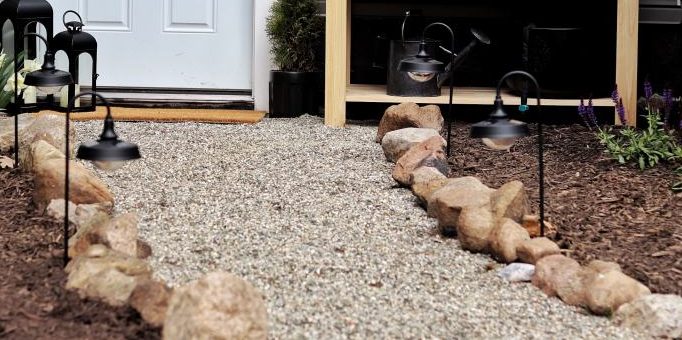
2. Decomposed Granite
Decomposed granite, also known as DG, is a product of weathering of hard igneous rock, granite. DG is made up of a mix of rocks, sand, and fine dust materials, a gradation that lends itself well to compaction.
It creates durable surfaces that can handle all sorts of traffic, from boots to tires.
Decomposed granite comes in a range of colors; red-brown hues, dusty tans, dark slate shades, and even bluish tones.
Prices range from $80 to $200 per cubic yard
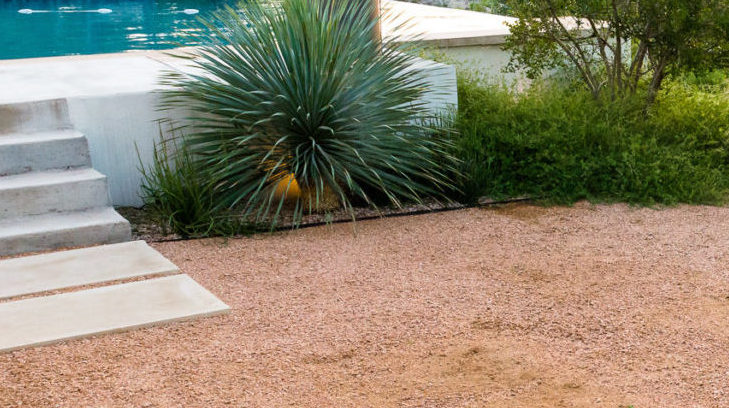
3. River Rock
River rocks, river stones, creek stones, Mexican Beach Pebbles, or beach rocks—these are some of the finest and most popular decorative stones. They range from 3/8 inches up to a mighty 5 inches in size.
Their colors and shades range from grey to tan, blue, and yellow. You can use them to line ponds, water features, and patios. Use them to fill the gaps between pavers, for a fine path, French Drain, or to create a dry river creek.
The cost per cubic yard can range anywhere from $100 up to a hefty $700.
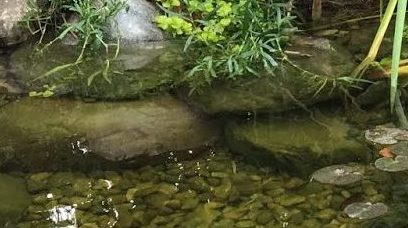
4. Lava rock
Lava rocks, or scoria, are rough stones that range in size, measuring anywhere between a tiny 1/8 inch to a robust 2 inches. Lava rocks are porous, so they soak up water.
Their color palette is wide; reds, blacks, browns, grays, or a combination of colors. Some supplies have rough edges but tumbled lava rocks are smooth to the touch
A cubic yard of these fiery gems will set you back anywhere from $150 to $300.
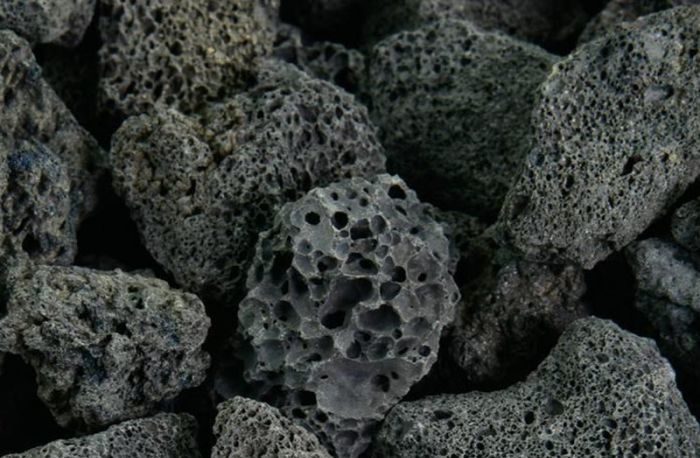
Crushed stone
Crushed rock is rough and angular. Their colors depend on the bedrock they hail from. We’re talking limestone, granite, shale, marble, dolomite, slate, trap rock, basalt, pumice, gneiss, or quartz that has been crushed. Each one of them brings its unique characteristics and colors to the table.
Stones are crushed into smaller sizes at the quarry, then sorted and screened into different particles and fines (also known as stone dust). Here are some of the grades to keep in mind:
- Dust and fines
- #1 Grade: Range from 2 to 4 inches.
- #2 Grade: Falls between ½ to 3 inches.
- #3 Grade: ½ to 2-inch range.
- #4 Grade: About 1 ½ inches or smaller.
- #8 Grade: 3/8 to ½ inches in size.
- #10 Grade: About 1/8 to ¼ inches or smaller.
- #57 Grade: Mix of stones ranging from ½ to 1 inch, with an average size of ¾ inches. About half are smaller than ¾ inches, and the rest are bigger.
- #411 Grade: Similar to #57, but it’s got some stone dust from the crushing process.
Types of crushed stone
- Clean stone: Screened to get rid of a lot of the stone dust.
- Washed clean stone: This is a clean stone that has been washed.
- Crusher run: It’s a mix of gravel and fines. It’s got smaller stones or crushed rock, plus clay, silt, and sand particles.
- Riprap: These are some hefty rocks. Often used to stabilize soil along driveways and culvert openings.
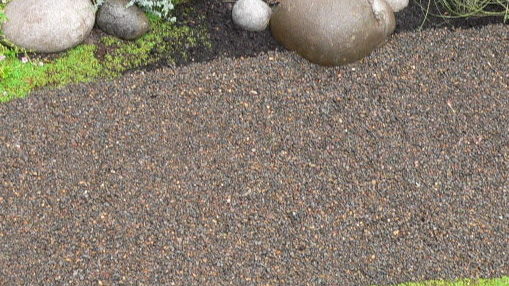
Marble chips
Mable chips are all about decoration and color. We’re talking white, black, brown, beige, cream, grey, ivory, onyx, pink, red, yellow, and silver. They bring a touch of class and elegance to any space.
Marble chips are the remnants of the marble industry that have been crushed.
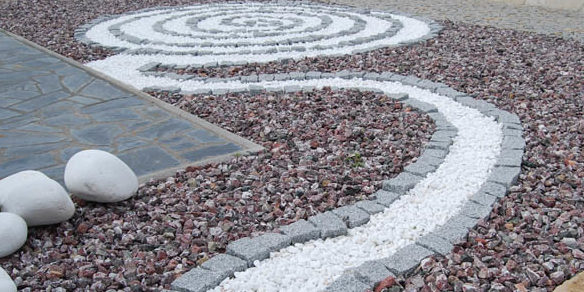
To Wrap up
When choosing landscape gravel or pebbles consider factors like color, texture, and size.
Think about how the gravel will fit the garden style and match other elements such as wood, stone, pavers, or bricks. Warm-toned gravels make a space inviting and are a fine backdrop for green foliage and blue and purple flowers. Cool-toned gravel such as crushed slate will make greenery and blossoms stand out.
Options like decomposed granite are great for pathways while crushed rock is perfect as a base material.


